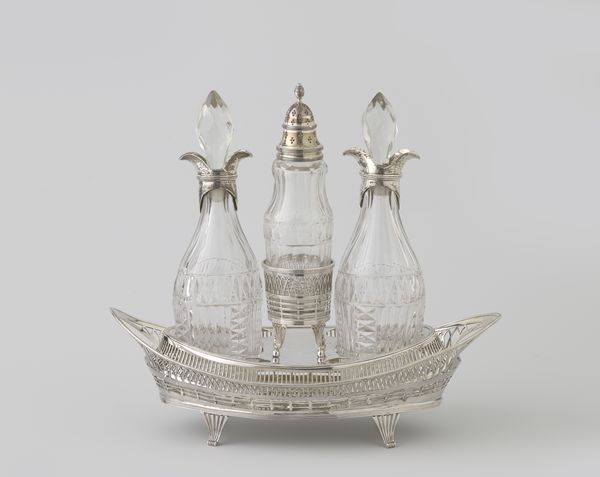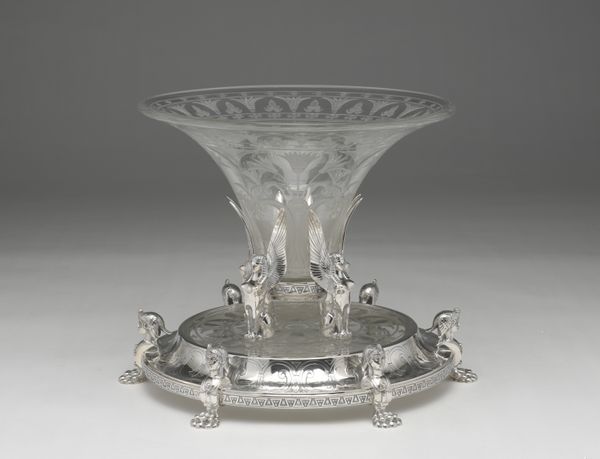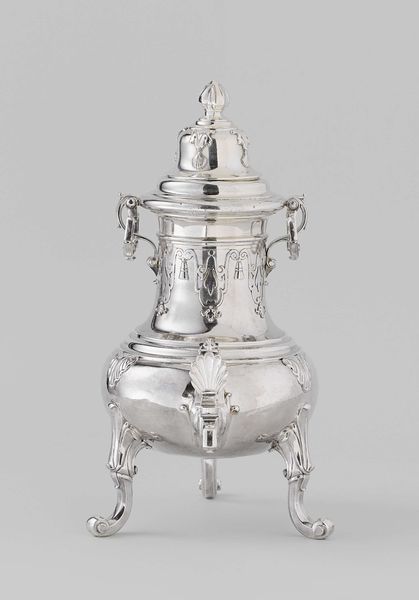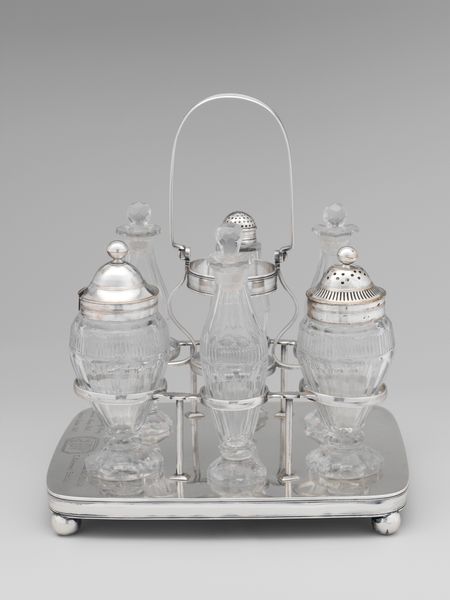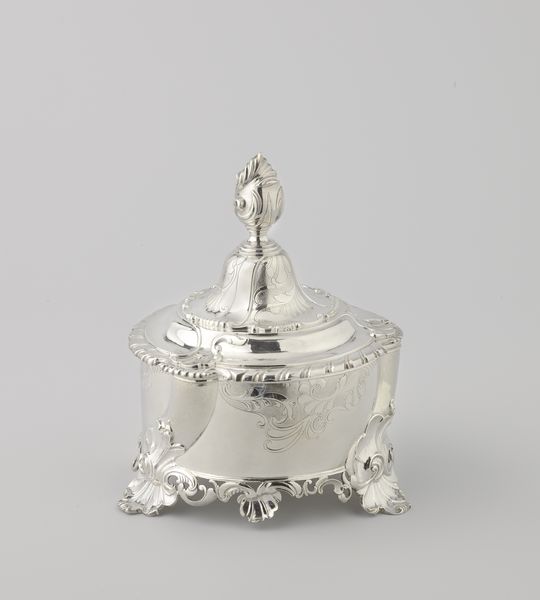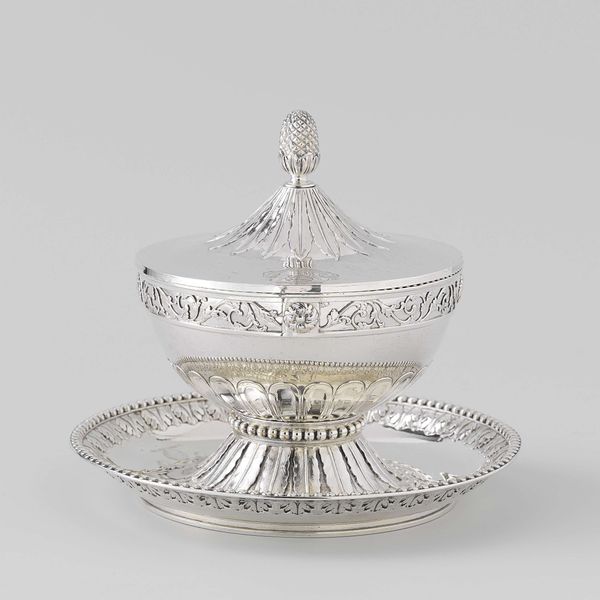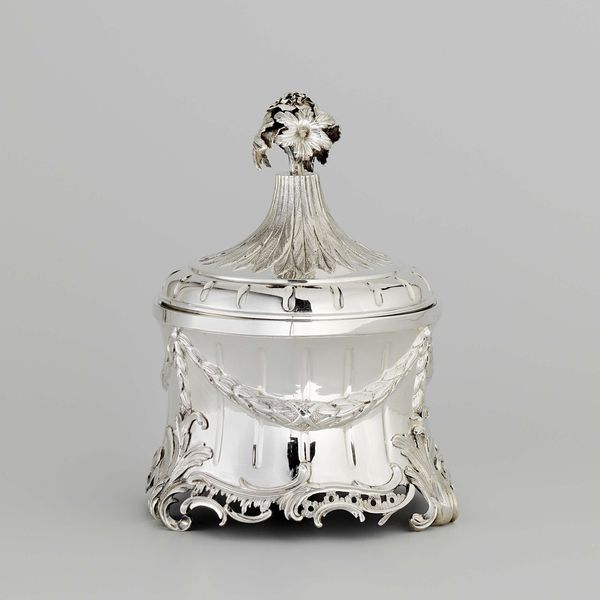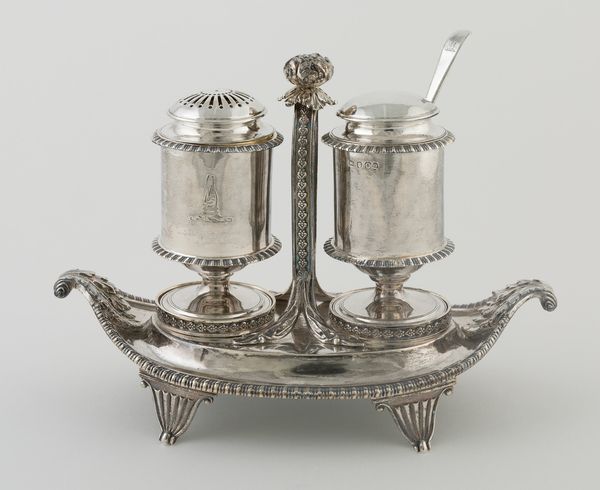
silver, glass
#
silver
#
glass
#
decorative-art
Dimensions: 8 1/2 x 12 x 8 in. (21.59 x 30.48 x 20.32 cm)
Copyright: Public Domain
Editor: This intricate cruet set was crafted by Paul Storr in 1807, using both silver and glass. It strikes me as incredibly opulent; the detail is just stunning. What does it tell us about the society it came from? Curator: Well, first consider the very *idea* of a cruet set. This wasn't a necessity for survival, was it? Objects like this speak volumes about wealth and status. It suggests a highly refined and formalized dining culture. In early 19th century Britain, industrial production increased. This allowed for wider access to silver and glassware, so the burgeoning middle class also wanted objects that signaled respectability, domestic harmony and sophistication. Would you agree? Editor: I see what you mean. It's like a status symbol solidified in silver and glass. But was Storr catering to aristocracy, or this rising middle class? Curator: Good question. Storr catered to both; but something like this would’ve absolutely been featured on tables set for London's elite. Remember, silverware denoted a certain level of power and importance. Silver objects had value but, more importantly, displayed a family's taste and judgement, reinforcing social hierarchies through consumption and display. And the quality craftsmanship signals permanence – that this family expects to stay at the top. What feelings do you think it conveyed to a guest at the table? Editor: That’s fascinating. It makes the set less about utility and more about messaging...control, even. I hadn’t considered that level of deliberate social signalling. Curator: Exactly! Art objects aren’t created in vacuums; they actively participate in social dialogues, then and now.
Comments
No comments
Be the first to comment and join the conversation on the ultimate creative platform.
